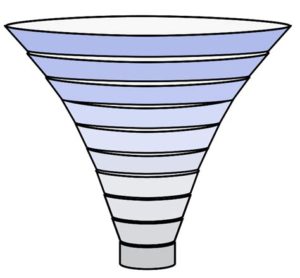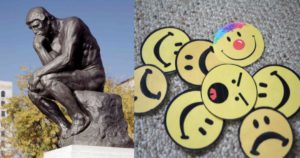- You are here:
- Home »
- Blog »
- Exploring Your Internal Map Of Reality (Series) »
- Exploring Your Internal Map Of Reality Part 7: Metaprograms, Part 1
Exploring Your Internal Map Of Reality Part 7: Metaprograms, Part 1
 So far in our series on the Internal Map of Reality, we have been examining the filters by which we construct the internal map of reality, of which we can add a new one – metaprograms.
So far in our series on the Internal Map of Reality, we have been examining the filters by which we construct the internal map of reality, of which we can add a new one – metaprograms.
As a reminder, these filters have the effect of deletion, distortion or generalization of the data that we absorb from the environment.
They include beliefs and values, as well as mechanisms such as chunking, modalities and submodalities.
Another vital filter mechanism that we use are called ‘Metaprograms.’ A metaprogram is defined as a filter that is content free – it is more about the way information is processed rather than the content of the process.
These processes are very unconscious, just as we are unaware of the blood flowing through our veins or the movement of electrical pulses along our nerves.
In the Internal Map of Reality we consider it in relationship to several aspects:
- Our external behaviour – in other words, what we do.
- Our internal state – why we do it.
- The internal processes – how we do it.
- Time. In other words ‘when we do it’, or if for the future, ‘what if?’
These make up what we call the 4 categories of metaprograms.

Carl Jung
The Origin of the term ‘Metaprograms’
Metaprograms are based on the Swiss psychiatrist Carl Jung‘s theories of personality. This was augmented by Kathryn Briggs and Isabelle Briggs-Myers. They are the foundation of the famous ‘Myers-Briggs’ personality test.
In order to understand your own metaprograms, you can take the Myers-Briggs test yourself online. There are many online resources – some are free and others require payment.
The official site is https://www.mbtionline.com/ – the Myers-Briggs Type Indicator – however this costs US$49.95.
A couple of free sites are:
16 Personalities https://www.16personalities.com/free-personality-test
Truity https://www.truity.com/test/type-finder-personality-test-new-f
There’s a free test here as well as a more detailed one for US$ 29.
The 4 categories defined by Myers-Briggs are:
- extrovert/introvert
- sensor/intuitor
- thinker/feeler
- judger/perceiver
The four categories can be applied simultaneously to each person, for example you could be a “extroverted-sensor-thinker-perceiver.” Thus there are 16 combinations of the 4 categories of different personality types (i.e. 4 squared)
It is important to note that people are not just one or the other. There is a spectrum in between each end of each category. Also note that these are ways of processing information, not how people identify themselves. you don’t say ‘I’m a thinker’ but ‘I process the world through my thoughts’
Extroverted/Introverted: External Behaviour
 Most people know what introversion and extroversion are. An introvert is very inward looking and is somewhat shy around other people. An extrovert is the opposite – they thrive with people around them and live for getting attention from them.
Most people know what introversion and extroversion are. An introvert is very inward looking and is somewhat shy around other people. An extrovert is the opposite – they thrive with people around them and live for getting attention from them.
Extroverts make up about 75% of the population and 25% are introverts.
Sensor/Intuitor: Internal Process
 Sensors and Intuitors process information differently.
Sensors and Intuitors process information differently.
Sensors are people who are interested in facts, trust facts and remember facts.
Intuitors on the other hand are more interested in the future and with possibilities.
Chunking is a feature of this behaviour. Intuitors tend to be ‘big picture’ people (chunked up) whereas Sensors will be chunked down in the nitty-gritty.
Most CEOs are intuitors, whereas most computer programmers will be sensors.
Intuitors will often experience overwhelm when faced with a big task. They are not able to chunk it down into smaller tasks, and they will most likely delegate them.
Conversely if you have trouble setting big ‘up there’ goals, you are most likely to be a sensor.
Thinker/Feeler: Internal State
 A ‘thinker’ evaluates the world by logic and reason. The ‘feeler’ evaluates the world by their internal feelings, values and other kinaesthetic determinants.
A ‘thinker’ evaluates the world by logic and reason. The ‘feeler’ evaluates the world by their internal feelings, values and other kinaesthetic determinants.
If you were to have a conversation with a ‘thinker’ you might hear words like
“objective,” “principles,” “policy,” “laws,” “justice,” “criteria,” and “firmness”
If you had a conversation with a ‘feeler,’ you might hear words like
“subjective,” values,” “extenuating circumstances,” “intimacy,” “persuasion,” “humane,” and “sympathy.”
However, it’s important to remember that thinkers do have feelings and feelers can think. It’s just that for one side, the other side is simply displayed less.
Thinkers and feelers are evenly distributed in the population, but there are is a slight gender difference. Men are 55% to 45% thinkers to feelers, and women are the converse – 55% to 45% feelers to thinkers.
Judger/Perceiver (Temporal)
 This category is how people perceive time. We all have a ‘timeline’ in which we perceive the direction of time.
This category is how people perceive time. We all have a ‘timeline’ in which we perceive the direction of time.
For many of us, the future is seen as being in front of us and the past behind us. But for others both the past and future are in front of us, or even moving diagonally through us.
The latter is a characteristic of the ‘Judger,’ the former that of the ‘Perceiver’
Judgers are mainly interested in the future and tend to be planners – even down to the minutiae. They will plan a trip to the beach down to the last minute and even decide the precise location they’ll set up camp. They tend to be ‘through time’ and run their lives like a train timetable (indeed they get very upset if the train is late!)
Judgers are also very results oriented, make lists and are always seeking closure.
Perceivers tend to be more in the moment and in the ‘now.’ You often hear them say things like ‘Let’s see what happens’ or ‘I’ll cross that bridge when I come to it.’ They are never on time for meetings and frequently miss the train!
Perceivers are quite happy to leave things open-ended. Indeed they feel anxious about making decisions (i.e. closures) because there could always be new information just around the corner.
There are a number of other metaprograms besides the four discussed above.
Click Here to read the next article in this series.
